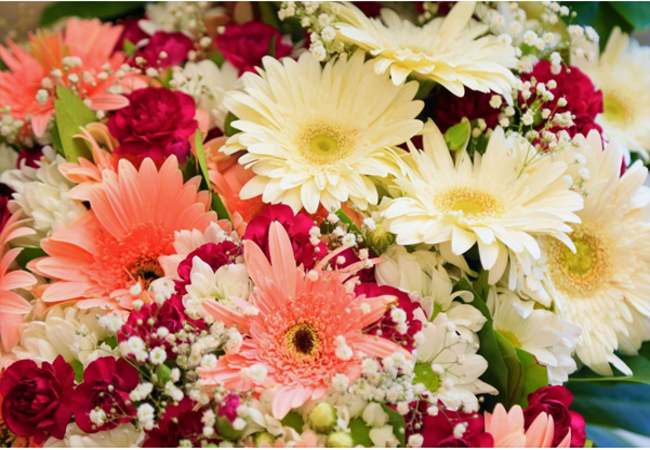In a world filled with words and gestures, there exists a silent yet eloquent language that has been captivating hearts and minds for centuries – the language of flowers, also known as floriography. Steeped in history and symbolism, this enchanting mode of communication transcends linguistic barriers, allowing individuals to express their deepest emotions through the subtle beauty of nature’s most exquisite creations. For those seeking to convey sentiments with a touch of floral poetry, consider the timeless choice to send flowers to Sheffield, where the language of blooms continues to weave tales of emotion and connection.
Historical Origins
To truly appreciate the art of floriography, we must delve into its intriguing historical origins. The roots of this enchanting language can be traced back to ancient civilizations, such as the Greeks and Romans; who often used flowers to convey messages of love, grief, and congratulations. However, it was during the Victorian era that floriography truly flourished, reaching its zenith of popularity.
In the Victorian era, societal norms often stifled open expressions of emotion; leading to a fascination with hidden messages and symbolism. Enter the language of flowers, which provided an ingenious solution to the emotional restraint of the times. By carefully selecting and arranging specific blooms, people could communicate their feelings discreetly and artfully. It was a clandestine form of expression, a secret shared between lovers, friends, and even adversaries.
Flower Meanings
Flowers, like words in a poetic stanza, carry unique meanings and sentiments. The language of flowers is a lexicon of emotions, each petal and leaf whispering its own tale. Consider the romantic rose, the queen of floriography. A single red rose conveys passionate love, while a white one speaks of purity and innocence. A yellow rose represents friendship, while a black rose signals farewell or the end of a relationship. The depth of emotion conveyed through a simple bloom is nothing short of remarkable.
Then there’s the delicate language of the lily. The white lily embodies purity and virtue, while the calla lily represents magnificent beauty. A yellow lily signifies gratitude, while the tiger lily symbolizes wealth and prosperity. As you delve deeper into the world of floriography; you uncover a tapestry of meanings that allow you to craft messages as intricate as a sonnet.
The vivacious tulip is another flower rich in symbolism. A red tulip signifies true love, while a purple one conveys royalty and elegance. A yellow tulip represents cheerful thoughts, and a white tulip is a symbol of forgiveness. With such a vibrant vocabulary at your disposal, you can express your feelings with the subtlety of a master poet.
Modern Applications:
In today’s fast-paced world, where digital communication dominates, one might wonder if floriography has lost its relevance. On the contrary, it has evolved to fit modern lifestyles while preserving its timeless charm.
Floral arrangements have become more than mere decorations; they are now living art forms that express emotions and set the tone for various occasions. The art of gifting flowers remains a cherished tradition. Whether it’s a bouquet of red roses for a passionate declaration of love, a bouquet of lavender for calm and tranquility, or a bouquet of sunflowers to brighten someone’s day, flowers continue to convey sentiments that words alone cannot capture.
Floriography has also found a home in the world of weddings, where couples choose flowers not only for their aesthetics but also for their meaningful symbolism. The bridal bouquet itself becomes a silent poem, encapsulating the couple’s love story and hopes for the future.
Beyond personal occasions, the corporate world has also embraced floriography as a tool for communication. Businesses use floral arrangements to convey gratitude to clients, motivate employees, or commemorate important milestones. A well-chosen bouquet can convey appreciation, trust, and commitment more powerfully than a standard thank-you note.
Conclusion:
In a world where words can sometimes fall short, the language of flowers stands as a testament to the enduring power of symbolism and emotion. From its historical origins in the Victorian era to its modern applications in the digital age, floriography continues to captivate hearts and minds with its subtle elegance.
As we navigate the complexities of human relationships and emotions, let us not forget the silent poetry of the blossoms around us. Whether you’re crafting a heartfelt message through a carefully selected bouquet or simply taking a moment to appreciate the beauty of nature’s language, floriography reminds us that sometimes, the most profound sentiments are the ones left unsaid.
So, as you go about your day, take a moment to embrace the language of flowers. Let their beauty and meaning speak to your soul and, perhaps, inspire you to express your deepest emotions in a way that transcends the limitations of ordinary words. After all, in the world of floriography, every bloom is a verse, and every arrangement is a love letter to the heart.




